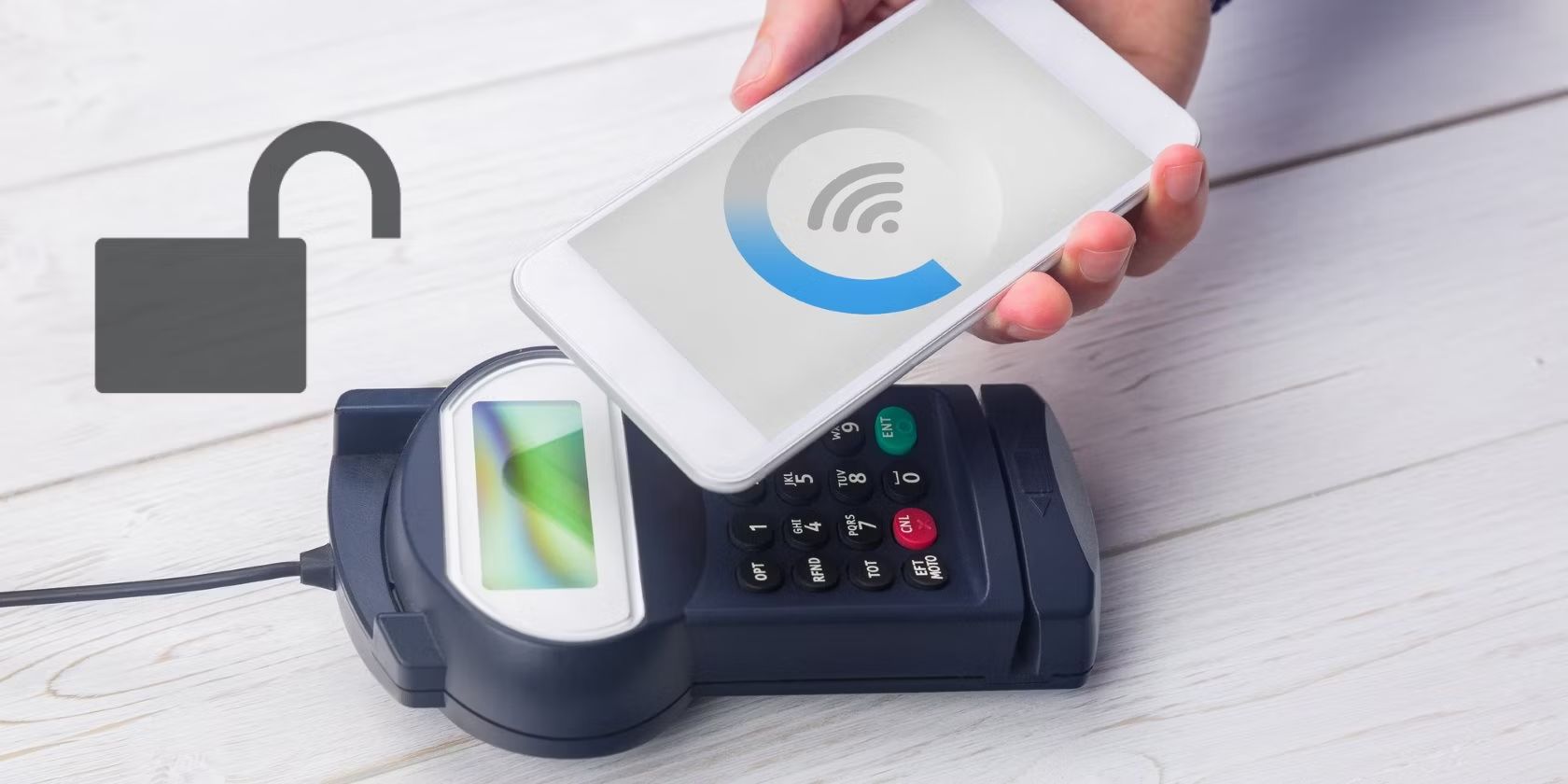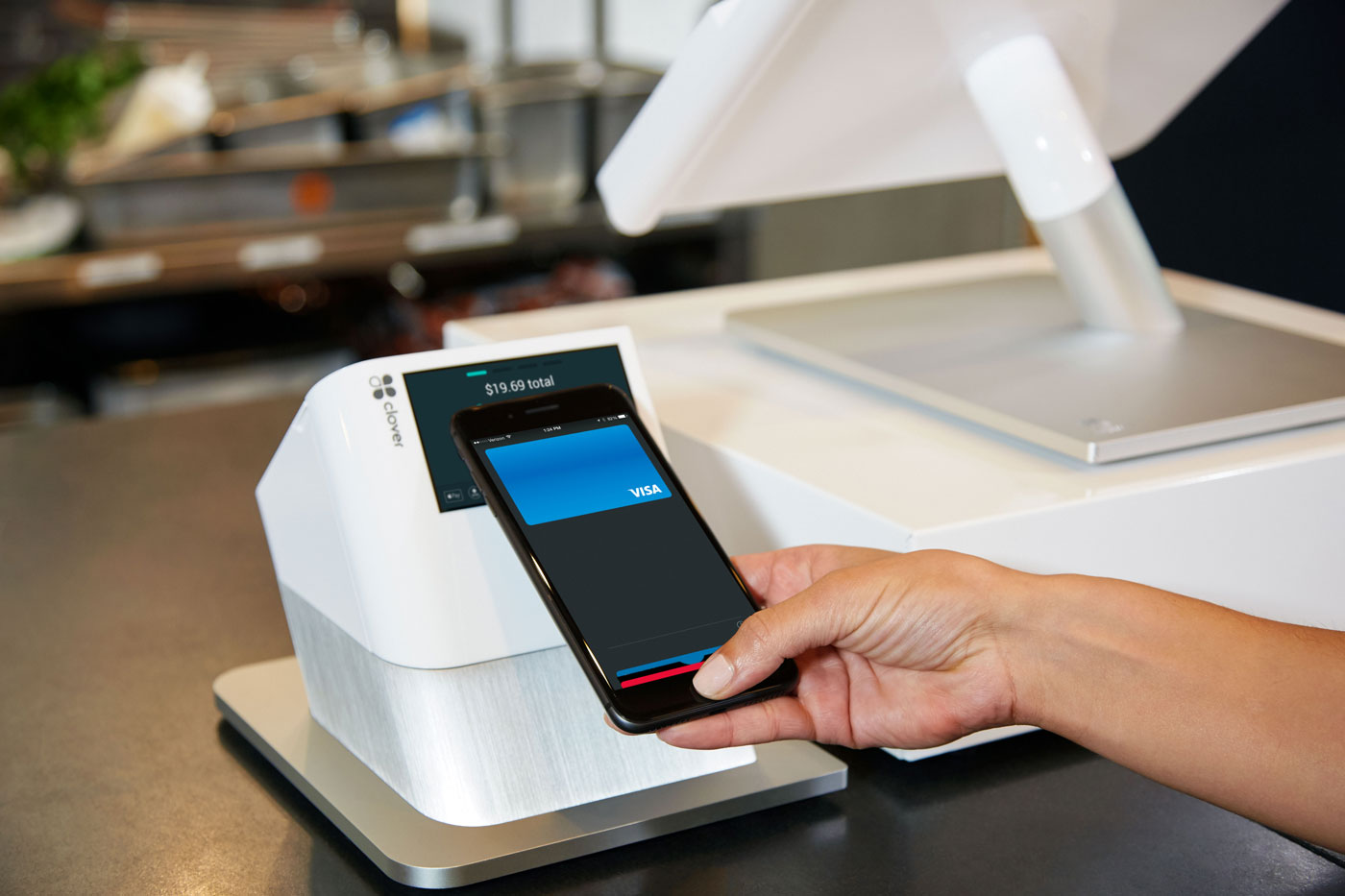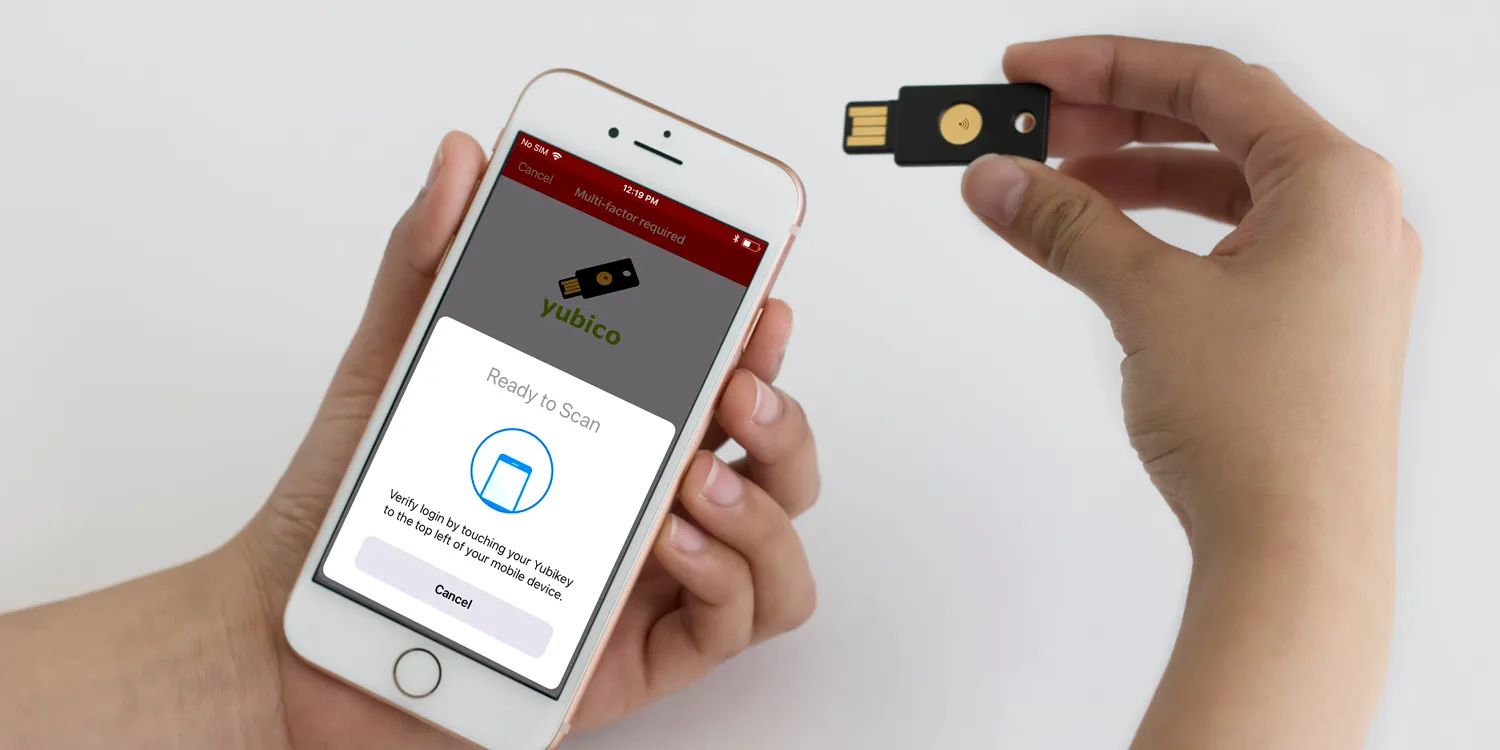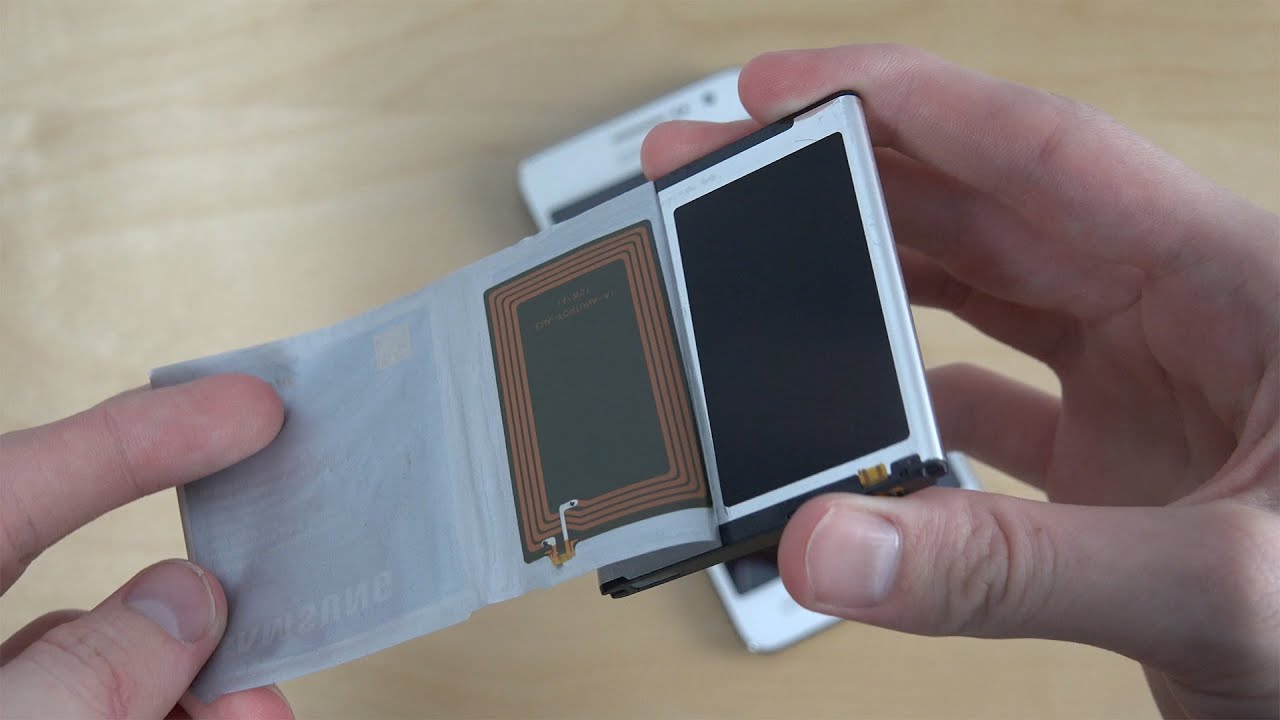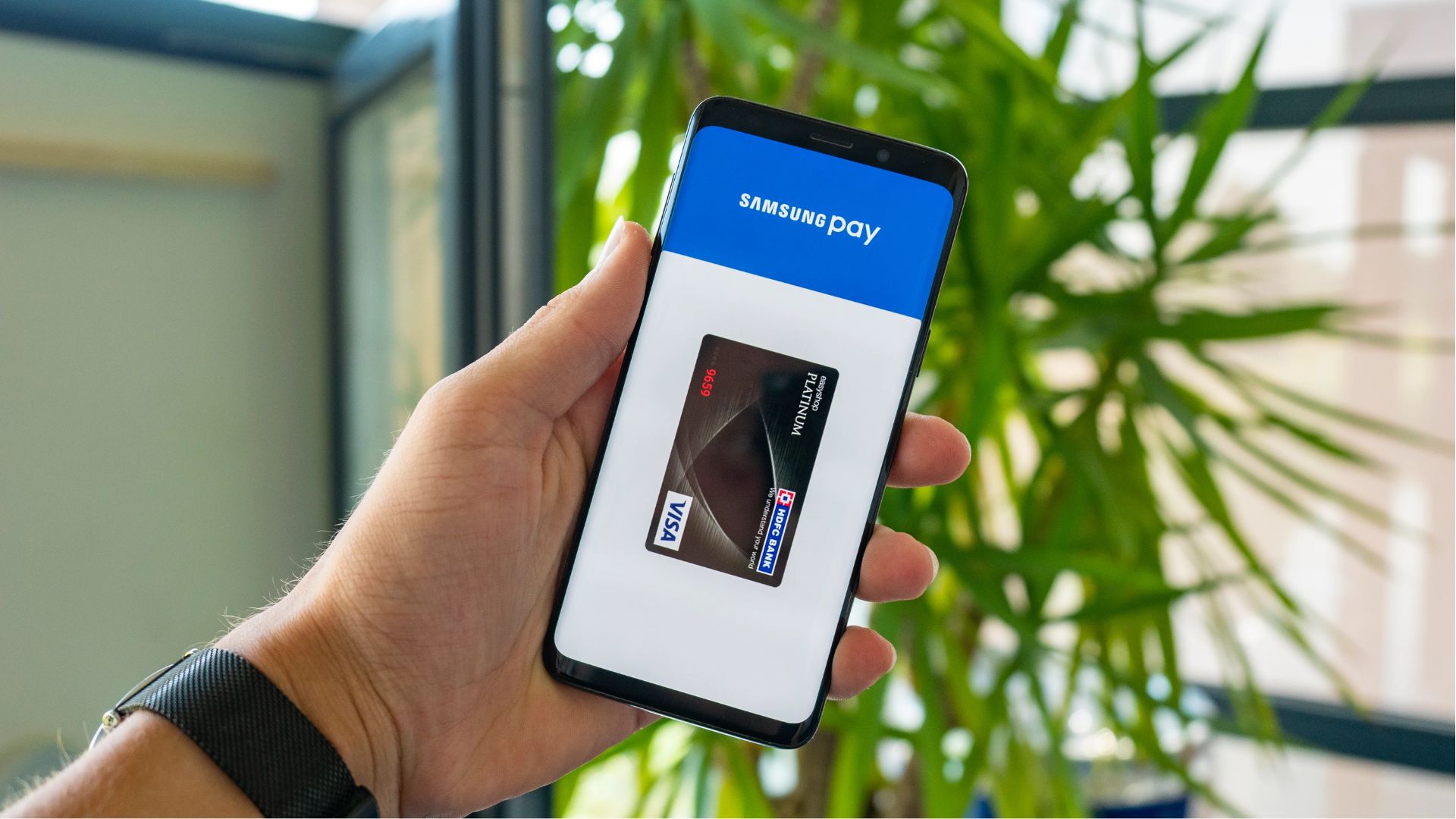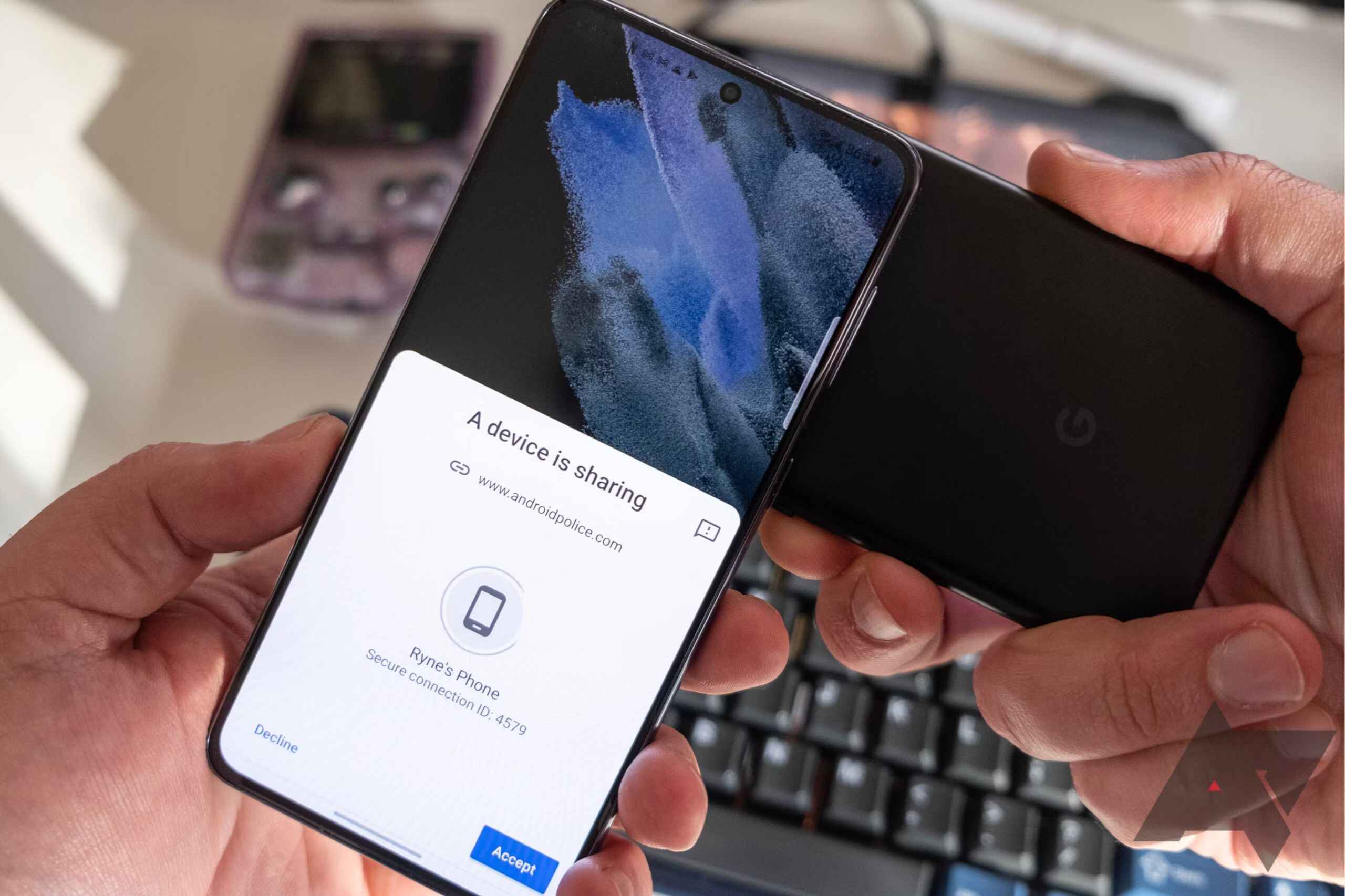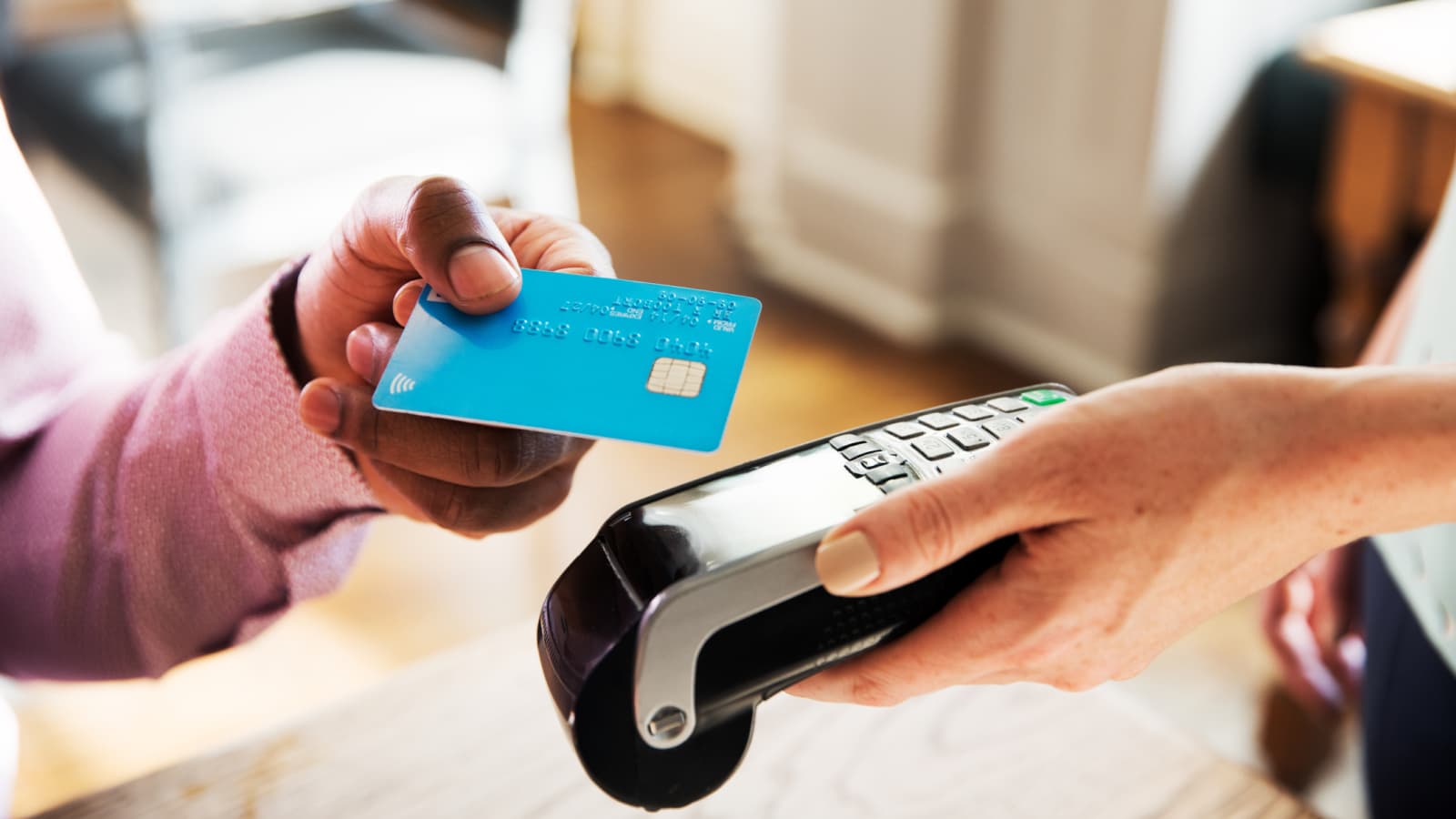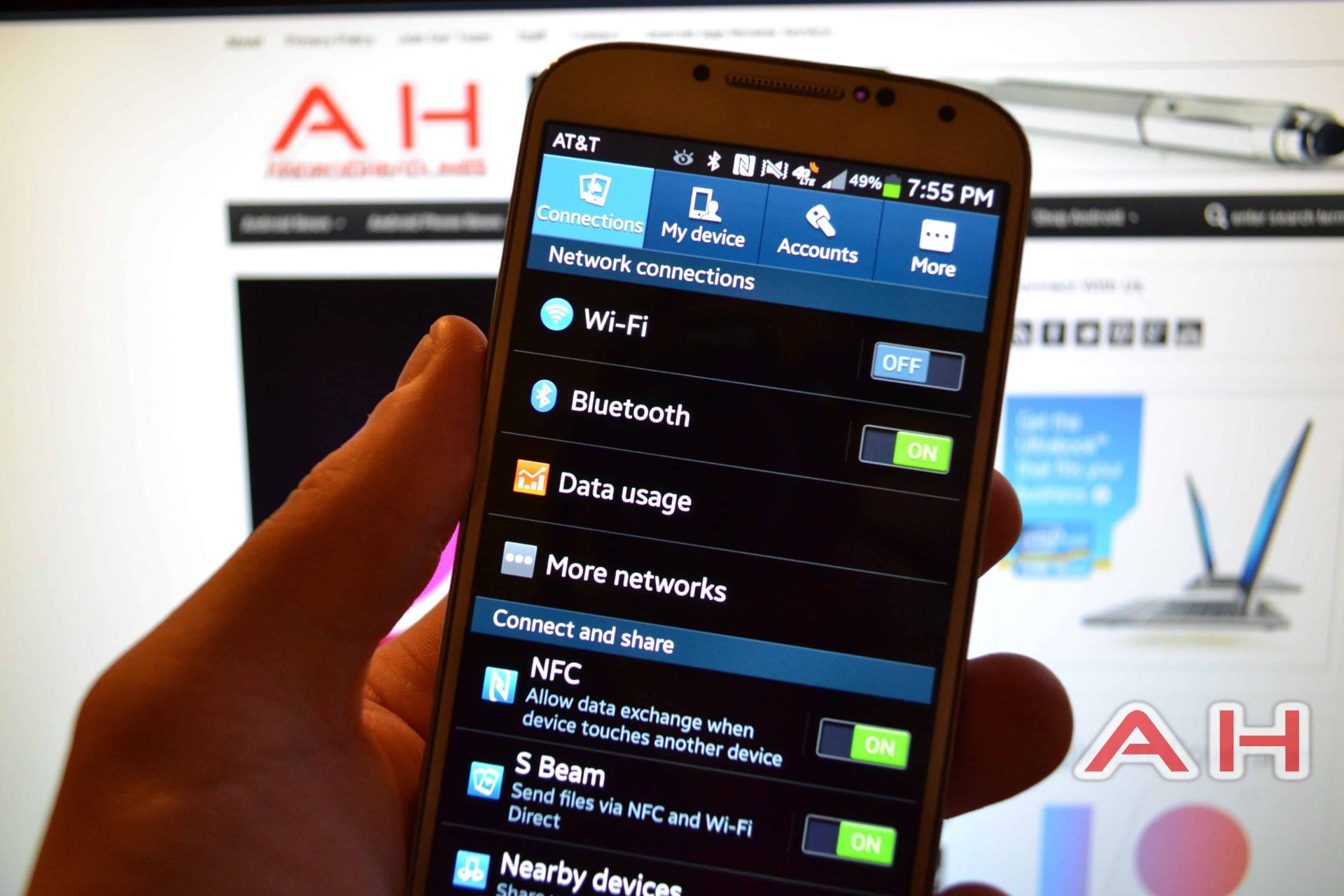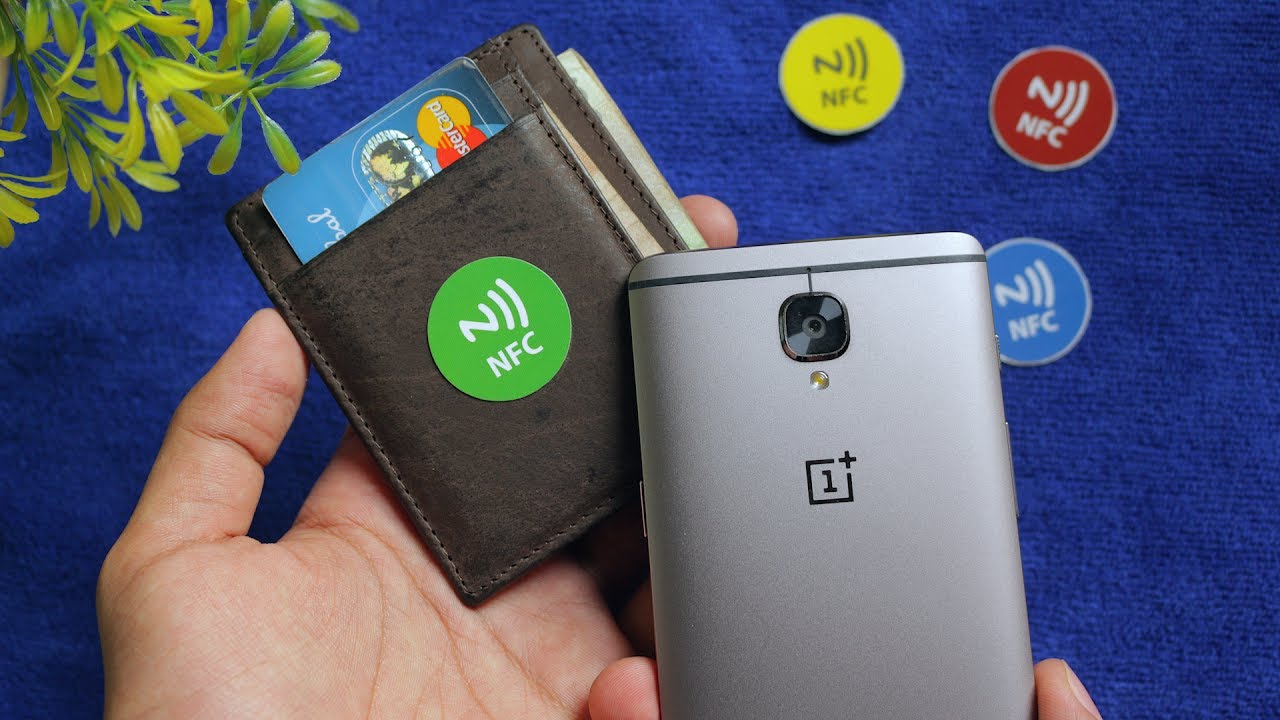Introduction
Near Field Communication (NFC) is a technology that is becoming increasingly prevalent in our daily lives. It allows for seamless communication and data transfer between devices with just a simple tap or wave. With the rise of NFC-enabled devices such as smartphones, tablets, and even contactless payment cards, understanding the basics of NFC security is crucial to safeguarding our personal information.
NFC technology was first introduced in the early 2000s and has since gained widespread adoption. The convenience and ease of use offered by NFC have made it a preferred choice for various applications, including mobile payments, accessing digital content, and sharing information between devices.
When two NFC-enabled devices come into close proximity, they establish a connection using radio frequency identification (RFID) technology. This connection allows for the exchange of data, such as contact information, URLs, or small files.
NFC operates on the same frequency as radio frequency identification (RFID) technology, but with a shorter range. This means that devices need to be within a few centimeters of each other to establish a connection. The short-range nature of NFC adds an extra layer of security compared to other wireless communication technologies like Bluetooth, which has a longer range.
In this article, we will explore the basics of NFC security, including authentication, data encryption, and potential vulnerabilities. We will also provide tips on how to protect your NFC devices to ensure your personal information remains secure.
What is NFC?
Near Field Communication (NFC) is a wireless communication technology that allows devices to communicate and share data when they are in close proximity to each other. It is a short-range technology that operates on radio frequency identification (RFID) principles.
NFC-enabled devices, which include smartphones, tablets, and contactless payment cards, have a small embedded NFC chip. This chip enables communication by sending and receiving data with other NFC devices. The communication is established by simply bringing the devices close together, usually within a few centimeters.
NFC can be used for a variety of applications, making it a versatile technology. One of the most common uses of NFC is mobile payments. Many smartphones today are equipped with NFC technology, allowing users to make contactless payments by simply tapping their device on an NFC-enabled payment terminal. This convenience has made NFC a popular choice for businesses and consumers alike.
In addition to mobile payments, NFC can be used for accessing digital content or transferring information between devices. For example, NFC tags can be placed on posters, advertisements, or product packaging. When a user taps their NFC-enabled device on the tag, it can trigger actions such as opening a website, downloading an app, or displaying additional information about the product.
NFC can also be used for simple data transfer between two devices. For instance, you can share contact information, photos, or small files by bringing two NFC-enabled devices close together. This eliminates the need for physical media or complex setup processes, providing a convenient way to exchange information.
With its simplicity and versatility, NFC has become an integral part of our everyday lives. Its adoption continues to grow, with more devices and applications incorporating NFC technology. Understanding how NFC works and its potential applications is important for both consumers and businesses in leveraging the benefits offered by this innovative technology.
How Does NFC Work?
Near Field Communication (NFC) technology utilizes electromagnetic fields to enable communication between devices. It operates on the principle of radio frequency identification (RFID), allowing for the transfer of data between NFC-enabled devices when they are brought into close proximity.
There are two main components involved in NFC communication: the NFC reader/writer and the NFC tag or device.
The NFC reader/writer is typically embedded within a device, such as a smartphone or tablet. This device is capable of both reading and writing data to NFC tags or other NFC-enabled devices. The NFC reader/writer generates an electromagnetic field, which is used to power the NFC tag or device and facilitate communication.
The NFC tag or device, on the other hand, contains a small chip that is capable of storing and transferring data. When the NFC tag or device is within range of the reader/writer’s electromagnetic field, it is powered up and can exchange data with the reader/writer.
Communication between the NFC reader/writer and the NFC tag or device happens through a process called electromagnetic coupling. When the devices are brought close together, the electromagnetic field emitted by the reader/writer induces a current in the antenna of the NFC tag or device. This current powers the NFC tag or device, allowing it to respond to the reader/writer’s commands and exchange data.
Once the NFC communication is established, data can be exchanged between the devices in one of two modes: read/write mode or peer-to-peer mode.
In read/write mode, the NFC reader/writer can read data stored on an NFC tag or write new data to it. This mode is commonly used for applications such as mobile payments, ticketing systems, or accessing digital content.
In peer-to-peer mode, two NFC-enabled devices can exchange data with each other. This mode allows for more complex interactions, such as sharing files, initiating a Bluetooth connection, or establishing a Wi-Fi Direct connection. Peer-to-peer mode requires both devices to support this functionality.
Overall, NFC technology simplifies the process of transferring data and enables convenient communication between devices. The short-range nature of NFC, along with its security features, makes it suitable for various applications, from mobile payments to secure access control systems.
Examples of NFC Applications
Near Field Communication (NFC) technology has gained popularity due to its versatility and ease of use. It has found a wide range of applications across various industries. Let’s explore some of the common examples of how NFC is used in everyday life.
1. Contactless Payments: NFC has revolutionized the way we make payments. Many smartphones and contactless payment cards now come equipped with NFC technology, allowing users to make tap-and-go payments at NFC-enabled payment terminals. This eliminates the need for physical cards or cash, making transactions quick and secure.
2. Access Control and Security: NFC is widely employed in access control systems, such as entry cards or key fobs used in office buildings or hotels. NFC-enabled devices can be used to securely authenticate individuals and grant or revoke access privileges. The convenience of NFC makes it an ideal technology for access control, as users can simply tap their device to gain entry.
3. Ticketing and Public Transport: NFC technology has made ticketing and travel more convenient. NFC-enabled devices can be used as electronic tickets or travel passes for public transport systems. Passengers can tap their devices at NFC readers to validate their ticket or update their account balance, eliminating the need for physical tickets or cards.
4. Retail and Loyalty Programs: NFC is used to enhance the retail experience and customer loyalty programs. Retailers can offer NFC-enabled smart tags on products that provide additional information when tapped by a customer’s device. Loyalty programs can utilize NFC for rewards and discounts, with customers simply tapping their device to redeem special offers.
5. Smart Homes and IoT Integration: NFC can be utilized to control and integrate various devices in smart homes. By using NFC-enabled devices, users can easily connect and control their smart appliances, home security systems, and other Internet of Things (IoT) devices. This simplifies the setup and management of smart home devices.
6. Healthcare and Medical Applications: NFC has found use in healthcare for activities such as patient identification, medication tracking, and remote monitoring. NFC-enabled devices can easily access patient information, ensuring accurate and secure data retrieval. Medication containers and devices can also be equipped with NFC technology for tracking usage and providing reminders.
These are just a few examples of the numerous applications of NFC technology. Its simplicity, security features, and seamless communication make it an ideal choice for various industries and use cases. As NFC continues to evolve, we can expect to see even more innovative and convenient applications in the future.
Security Issues with NFC
While Near Field Communication (NFC) technology offers convenience and ease of use, it also presents certain security risks. It is important to understand these potential vulnerabilities to ensure the protection of personal information and sensitive data. Let’s explore some of the security issues associated with NFC.
1. Eavesdropping: NFC communication occurs in close proximity, which reduces the risk of interception. However, it is still possible for attackers in very close proximity to eavesdrop on the communication between two NFC devices. This can lead to unauthorized access to sensitive data or even the cloning of NFC tags.
2. Malicious Data Manipulation: Attackers can attempt to manipulate or alter the data being transferred between NFC devices. By doing so, they can potentially trick the receiving device into executing unintended commands or actions. This can lead to unauthorized transactions, unauthorized access, or the installation of malicious software.
3. NFC Tag Vulnerabilities: NFC tags can be manipulated or tampered with by attackers. They can overwrite the data stored on the tag or even replace a legitimate tag with a malicious one. Users may unknowingly tap their devices on compromised tags, leading to the execution of unauthorized commands or the installation of malware.
4. Unauthorized Device Pairing: NFC-enabled devices can be paired with each other to facilitate peer-to-peer communication. However, if an unauthorized device successfully pairs with a user’s device, it can gain access to personal data and potentially exploit vulnerabilities in the connected device or extract sensitive information.
5. Data Leakage: If NFC devices are not properly secured, sensitive data can be exposed during communication. This can occur during the exchange of personal information, financial details, or other confidential data. Attackers can intercept and exploit this data for malicious purposes.
6. Man-in-the-Middle Attacks: In a man-in-the-middle attack, an attacker intercepts and alters the communication between two NFC devices. This allows them to manipulate the data being transferred, potentially leading to unauthorized transactions or access to sensitive information.
To mitigate these security issues, it is important to take certain precautions. This includes keeping NFC devices up to date with the latest firmware and security patches, enabling device encryption and strong authentication mechanisms, and being cautious when tapping or pairing with unknown or untrusted devices or tags.
The Basics of NFC Security
Near Field Communication (NFC) technology has become an integral part of our daily lives, offering convenience and seamless communication. However, it is important to understand the basics of NFC security to protect sensitive information and prevent unauthorized access. Let’s delve into the fundamentals of NFC security.
1. Authentication: Authentication is a crucial aspect of NFC security. It ensures that the devices involved in communication are legitimate and authorized to exchange data. NFC devices use various authentication methods, such as cryptographic keys or PIN codes, to establish trust and verify the identity of the communicating devices.
2. Data Encryption: Data encryption plays a critical role in securing NFC communication. It involves encoding the data transmitted between devices in a way that makes it unintelligible to unauthorized parties. Encryption algorithms, such as Advanced Encryption Standard (AES), are used to encrypt and decrypt the data, ensuring its confidentiality and integrity.
3. Secure Element: NFC-enabled devices often contain a secure element, which is a tamper-resistant chip that stores sensitive data, such as cryptographic keys or payment credentials. The secure element provides an additional layer of security by protecting the confidentiality and integrity of the stored data. It helps prevent unauthorized access or tampering.
4. Secure Applications: Many NFC applications, such as mobile payments or access control systems, use secure applications to safeguard sensitive data. These applications are specifically designed to adhere to security standards and implement robust security measures, including encryption, secure storage of credentials, and secure communication protocols.
5. Device Security: The security of the NFC-enabled device itself is crucial for overall NFC security. It is important to keep the device’s operating system and applications up to date with the latest security patches. Additionally, enabling device encryption, using strong PINs or passwords, and implementing biometric authentication can help protect against unauthorized access.
6. User Awareness: User awareness and responsible usage of NFC devices are key factors in maintaining security. Users should be cautious when tapping or pairing with unknown devices or tags. They should also be mindful of the types of data shared through NFC and avoid exposing sensitive information to potentially compromised devices or tags.
By understanding and implementing these basic principles of NFC security, users can enhance the privacy and security of their NFC-enabled devices. Additionally, businesses and organizations should prioritize the implementation of robust security measures to protect their customers’ data and ensure a secure NFC experience.
Authentication in NFC
Authentication is a vital component of NFC (Near Field Communication) security. It ensures that the devices involved in communication are legitimate and authorized to exchange data. Without proper authentication, there is a risk of unauthorized access and potential security breaches. Let’s explore the importance of authentication in NFC and the various methods used to establish secure communication.
1. Cryptographic Keys: One common method of authentication in NFC is the use of cryptographic keys. Each NFC-enabled device has a unique key that is securely stored. When devices come into close proximity, they exchange these keys to verify their identity and establish a secure connection. Cryptographic keys play a crucial role in encrypting and decrypting the data exchanged between devices, ensuring its confidentiality and integrity.
2. PIN Codes: Another method of authentication is the use of PIN (Personal Identification Number) codes. The NFC-enabled device prompts the user to enter a PIN code to verify their identity before establishing a connection. This method adds an extra layer of security and ensures that only authorized users can access the device or initiate communication.
3. Secure Element: NFC-enabled devices often contain a secure element, which is a tamper-resistant chip that securely stores sensitive data, such as cryptographic keys or payment credentials. The secure element ensures that only trusted and authorized applications can access the stored data. This further enhances authentication and protects against unauthorized access or tampering.
4. Mutual Authentication: Mutual authentication is a process where both NFC-enabled devices authenticate each other before establishing a connection. This two-way authentication ensures that both parties are legitimate and that the communication can be trusted. Mutual authentication is particularly important in applications such as mobile payments or access control, where secure and trusted communication is paramount.
5. Trusted Third Parties: In some NFC applications, trusted third parties are involved in the authentication process. These third parties act as intermediaries to verify the identity of the communicating devices. They provide an additional layer of trust and security by validating the authenticity of the devices and facilitating secure communication between them.
Authentication in NFC is essential for ensuring secure communication and preventing unauthorized access to sensitive data. By utilizing methods such as cryptographic keys, PIN codes, secure elements, mutual authentication, and trusted third parties, NFC technology can provide a robust level of security. It is important for users and businesses to implement proper authentication mechanisms to protect against potential security threats and ensure the integrity of NFC-enabled transactions and interactions.
Data Encryption in NFC
Data encryption is a crucial aspect of NFC (Near Field Communication) security. Encryption ensures that the data exchanged between NFC-enabled devices remains confidential and cannot be accessed or manipulated by unauthorized parties. By encrypting the data, NFC technology provides a secure communication channel for various applications. Let’s explore the importance of data encryption in NFC and how it is implemented to protect sensitive information.
1. Confidentiality: Data encryption in NFC ensures the confidentiality of the information being transmitted. Encryption algorithms, such as Advanced Encryption Standard (AES), are used to convert the data into ciphertext, which can only be deciphered with the corresponding decryption key. This prevents unauthorized parties from intercepting and understanding the exchanged data.
2. Integrity: Encryption also ensures the integrity of the data. Through a process called message authentication, encryption algorithms generate a unique code, known as a message authentication code (MAC), that is sent along with the encrypted data. The MAC provides a way to verify that the data has not been tampered with during transmission, as any alteration would result in a mismatched MAC.
3. Symmetric Key Encryption: NFC devices often utilize symmetric key encryption for data transmission. In this method, the same key is used to both encrypt and decrypt the data. The key is securely stored on the devices and is never transmitted over the NFC communication channel. This ensures that only authorized devices with the correct key can decrypt and access the data.
4. Asymmetric Key Encryption: In some cases, NFC may employ asymmetric key encryption, also known as public-key encryption. This method utilizes a pair of keys – a public key for encryption and a private key for decryption. The public key is freely available to other devices, while the private key is kept secret. Asymmetric key encryption provides an additional layer of security, as it allows for secure communication even if one device’s private key is compromised.
5. Encryption Algorithms: NFC devices use industry-standard encryption algorithms, such as AES, to ensure the security of the data. These algorithms have undergone rigorous testing and are widely recognized for their effectiveness in protecting sensitive information. By utilizing strong encryption algorithms, NFC technology offers a high level of security against unauthorized access.
Data encryption in NFC is crucial for protecting the privacy and integrity of the exchanged information. It ensures that sensitive data, such as personal information or financial details, remains secure during communication between NFC-enabled devices. By implementing robust encryption methods, NFC technology safeguards sensitive information in various applications, including mobile payments, access control systems, and data transfer between devices.
Potential Vulnerabilities in NFC
While Near Field Communication (NFC) offers convenience and seamless communication, it is important to be aware of potential vulnerabilities. Identifying these vulnerabilities helps ensure the protection of sensitive information and enables users to take appropriate measures to mitigate security risks. Let’s explore some of the potential vulnerabilities in NFC technology.
1. Eavesdropping: While NFC communication has a short range, attackers in close proximity may attempt to eavesdrop on the communication between devices. By intercepting the radio waves used for NFC communication, attackers can potentially gain unauthorized access to sensitive information or clone NFC tags, compromising the security of the communication process.
2. Data Manipulation: Attackers may attempt to manipulate or alter the data being transferred between NFC-enabled devices. By altering the data, they can trick the receiving device into executing unintended commands or actions. This could lead to unauthorized transactions, the installation of malicious software, or the extraction of sensitive information.
3. NFC Tag Vulnerabilities: NFC tags, which are used for various applications, can be susceptible to attacks. Attackers can overwrite the data stored on the tag or even replace a legitimate tag with a malicious one. Users may unwittingly tap their devices on compromised tags, leading to the execution of unauthorized commands or the installation of malware.
4. Unauthorized Device Pairing: NFC-enabled devices can be paired with each other for peer-to-peer communication. Without proper security measures, attackers may attempt to pair with a user’s device without their knowledge or consent. This unauthorized pairing can lead to unauthorized access to personal data, exploitation of vulnerabilities in the connected device, or the extraction of sensitive information.
5. Data Leakage: If proper security measures are not implemented, NFC communication can result in data leakage. During the exchange of personal information, financial details, or other confidential data, attackers can potentially intercept and exploit this data for malicious purposes. Ensuring the confidentiality and integrity of the data being transferred is crucial in mitigating data leakage risks.
6. Malicious Applications: Attackers may attempt to exploit vulnerabilities in NFC-enabled devices through the installation of malicious applications. These malicious applications may misuse the device’s NFC functionalities or exploit vulnerabilities in the NFC stack to gain unauthorized access, steal sensitive information, or perform unauthorized transactions.
Understanding these potential vulnerabilities in NFC technology is key to implementing appropriate security measures. Users and businesses must employ encryption, strong authentication mechanisms, device security measures, and be cautious when interacting with unknown devices or NFC tags. Regular software updates, antivirus protection, and staying informed about emerging threats can help reduce the risk of exploitation and ensure a secure NFC experience.
Protecting Your NFC Devices
Ensuring the security of your Near Field Communication (NFC) devices is essential to protect your personal information and prevent unauthorized access. By implementing best practices and following security guidelines, you can safeguard your NFC-enabled devices from potential threats. Let’s explore some important measures for protecting your NFC devices:
1. Enable Device Lock: Keep your NFC-enabled device secure by enabling a lock screen feature, such as a PIN code, password, pattern, or biometric authentication. This adds an extra layer of protection in case your device is lost or stolen, preventing unauthorized access to your data.
2. Use Device Encryption: Enable device encryption on your NFC-enabled device to protect your data at rest. Encryption scrambles your data, making it unreadable without the proper decryption key. This provides an additional level of protection, especially if your device falls into the wrong hands.
3. Install Updates and Patches: Regularly update your NFC-enabled device with the latest firmware updates and security patches. These updates often include bug fixes, feature enhancements, and security improvements, addressing any vulnerabilities that may have been discovered.
4. Be Cautious with Unknown Devices: Use caution when interacting with unknown NFC devices or tags. Avoid tapping your device on suspicious or untrusted tags, as they may be compromised or contain malicious content. Stick to trusted sources and known NFC-enabled devices to minimize the risk of unauthorized access or malware installation.
5. Secure NFC Payments: If you use your NFC-enabled device for mobile payments, ensure that you use trusted payment apps and services. Stick to reputable vendors and ensure that the payment apps have strong security measures in place, such as tokenization or biometric authentication, to protect your financial data during transactions.
6. Disable NFC when Not in Use: When you are not using NFC features, consider disabling NFC on your device. This reduces the risk of accidental or unauthorized NFC interactions. Disabling NFC when not in use also helps conserve battery life on your device.
7. Use Anti-Malware Protection: Install reputable anti-malware software on your NFC-enabled device to detect and protect against malicious apps or files that may attempt to exploit NFC vulnerabilities. Regularly update the anti-malware software to ensure it has the latest threat definitions.
8. Educate Yourself: Stay informed about the latest NFC security best practices, vulnerabilities, and emerging threats. Educate yourself on the potential risks associated with NFC technology and regularly review security guidelines provided by the device manufacturer and trusted sources.
By following these measures and implementing strong security practices, you can enhance the protection of your NFC-enabled devices. Remember to stay vigilant, exercise caution when using NFC features, and regularly update your device’s security settings to mitigate potential risks and keep your personal information secure.
Conclusion
Near Field Communication (NFC) technology has transformed the way we interact with devices and share information. While it offers convenience and seamless communication, it is crucial to understand the security aspects and take necessary precautions to protect our personal information and sensitive data.
Throughout this article, we have explored the basics of NFC security, including authentication, data encryption, potential vulnerabilities, and ways to protect NFC devices. By implementing strong authentication methods, such as cryptographic keys or PIN codes, NFC devices can verify the legitimacy of communication and prevent unauthorized access. Data encryption ensures the confidentiality and integrity of the exchanged information, preventing eavesdropping and data manipulation.
We also discussed potential vulnerabilities in NFC, such as eavesdropping, data manipulation, and NFC tag vulnerabilities. Understanding these vulnerabilities helps users take appropriate measures to mitigate risks, such as staying cautious with unknown devices or tags and keeping NFC devices up to date with the latest security patches.
To protect NFC devices, it is crucial to enable device locks, use encryption, install updates and patches, be cautious with unknown devices, secure NFC payments, disable NFC when not in use, use anti-malware protection, and stay informed through education and awareness.
By implementing these security practices, both individuals and businesses can ensure the privacy and security of NFC-enabled devices. It is essential for users to stay vigilant, regularly review security guidelines, and adapt to the evolving landscape of NFC security threats.
Ultimately, NFC technology has revolutionized the way we interact with our devices and share information. With careful attention to security measures, we can fully benefit from the convenience of NFC while keeping our personal information safe from unauthorized access and potential threats.







